The look and small-town feel of pre-hype Lisbon lives on in the western waterfront neighborhood of Alcântara.
Lisbon’s recent emergence as one of Europe’s most popular destinations has changed the face of the city, replacing mom-and-pop grocery stores and local pharmacies and bakeries with sleek cafés and restaurants. But the look and feel of pre-hype Lisbon lives on in pockets of the city, particularly the western waterfront neighborhood of Alcântara.
Sandwiched between the highbrow Lapa neighborhood, Lisbon’s diplomatic quarter, and the riverside tourist magnet Belém, Alcântara is a patchwork of abandoned mansions—their former glory still palpable despite decades of neglect and the weeds growing out of their dilapidated roofs—and small working-class apartment buildings with Hobbit-sized wooden doors. In Alcântara, hole-in-the-wall restaurants dish up hearty multi-course lunches, complete with the obligatory glass of wine, for 7 euros, along with multi-colored Jello cubes in sundae glasses as if time had stopped in 1973. But the neighborhood also has its tony side—notably, the traditional seafood restaurant Solar dos Nunes.
Start the walking tour just over Alcântara’s eastern edge, in Lapa, with a breakfast à la francaise at La Boulangerie, a little café that’s reputed to have the best croissants in Lisbon. Then head across the street to the Museu Nacional de Arte Antiga, Portugal’s answer to the Louvre, a sprawling art museum housed in a 17th-century palace with the world’s premier collection of Portuguese art, as well as pieces from former Portuguese colonies from India to Brazil. Don’t miss the “Namban Paravents,” folding screens made in Japan in 1606 that depict Portuguese navigators’ arrival, and “Temptations of St. Anthony,” a ghoulishly gorgeous triptych by Hieronymus Bosch. Also, be sure to check out the museum’s gardens, which offer a privileged view over the Tagus River.
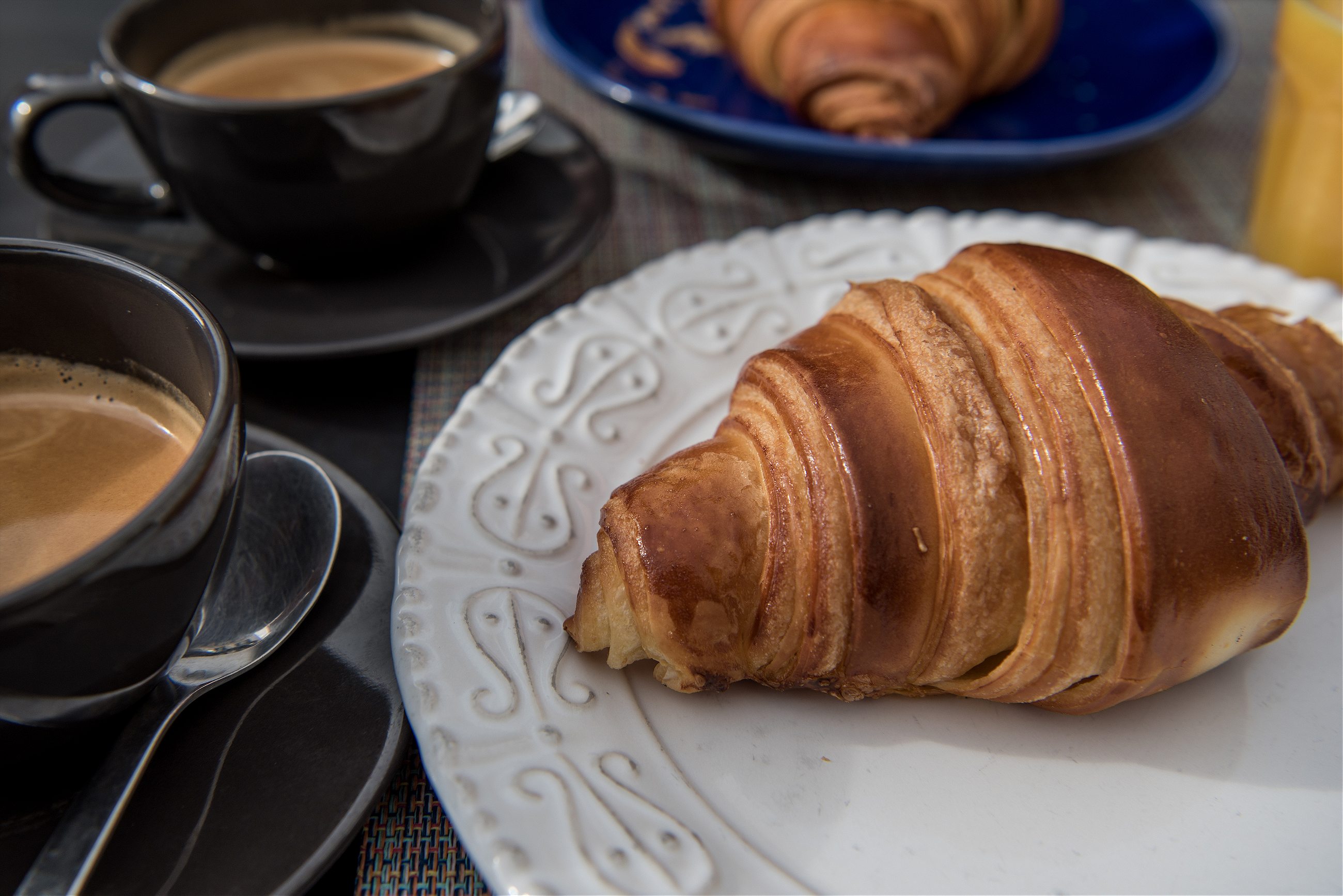
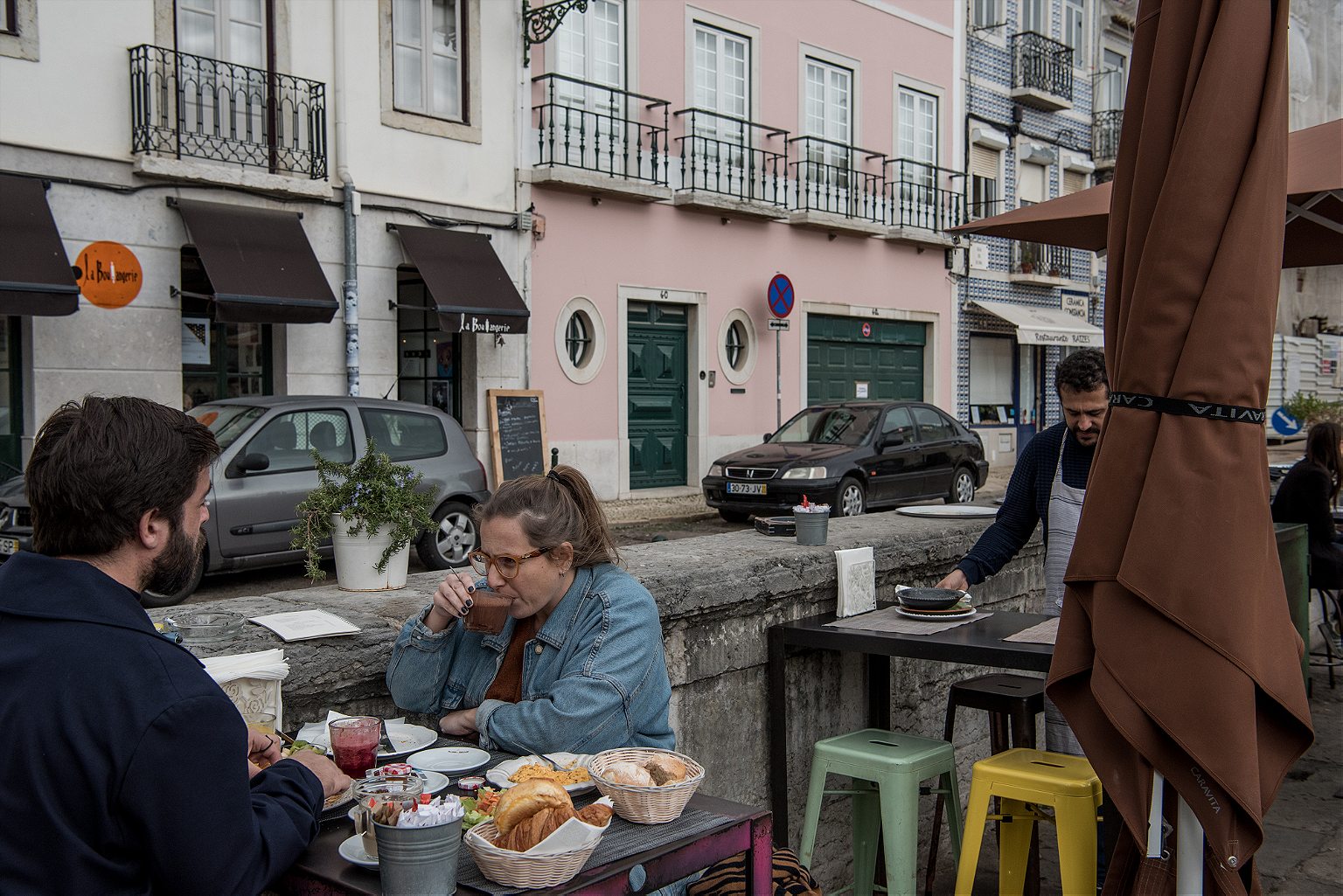

If you’re hungry after the museum, head due west on the Rua das Janelas Verdes (the street will change names several times, but just keep walking) to Copenhagen Coffee Lab, which serves specialty coffees, sandwiches, and breakfast spreads in a pared-down space dominated by blond wood. Copenhagen, which now has several locations throughout the city, bakes its own bread, including dark, dense Danish breads that are the highlight of their breakfasts.
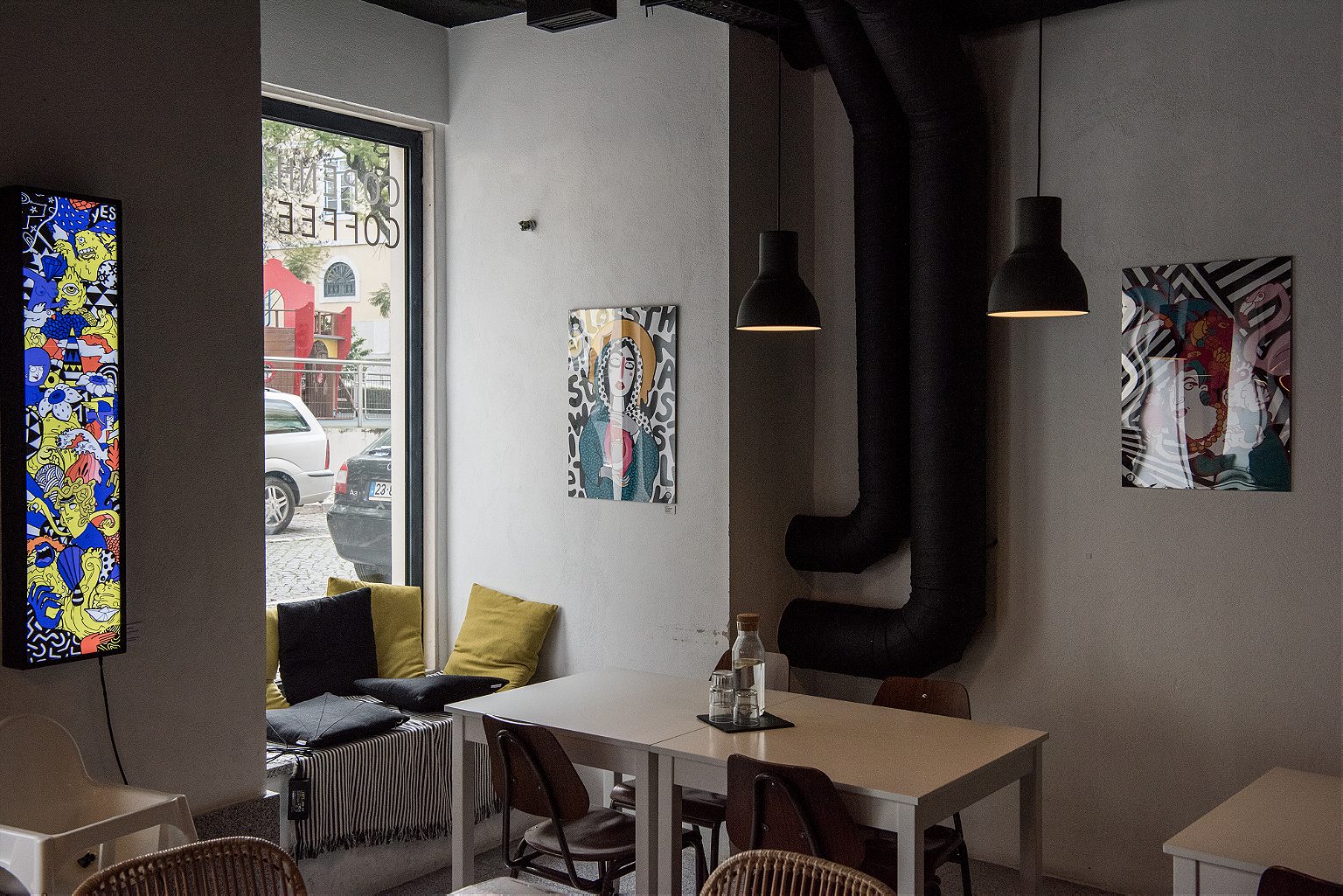
But if you want to experience traditional Portuguese bread in all its near-bygone glory, head across the street to Gleba, a bakery that is the brainchild of 23-year-old entrepreneur Diogo Amorim, who’s helping to revive domestic grain production, which was decimated in the wake of Portugal’s 1986 entry into the European Union. Using wheat, rye, and corn sourced locally from a handful of farmers and milled fresh daily, Amorim and his team bake loaves of outstanding sourdough. Don’t be daunted by the line, which sometimes stretches out the door and down the block: Gleba is worth the wait.
Then, head away from the river, up the Rampa das Necessidades, until you hit the Palácio das Necessidades, a sprawling, Pepto Bismol-pink palace that was the seat of the Portuguese monarchy, on and off, after the cataclysmic 1755 earthquake, tidal wave, and fires that destroyed the former royal residence in what is now Baixa. The palace now houses the Ministry of Foreign Affairs, and is not open to the public, but you can get a taste of its regal splendor by visiting its former grounds, now a public park known as the Tapada das Necessidades. Once the site of the royal tennis court, the queen’s painting workshop, a round iron-and-glass hothouse, as well as one of the oldest cactus gardens in Europe, the park is also said to have served as the inspiration for French painter Édouard Manet’s polemic 1863 masterpiece, “Le déjeuner sur l’herbe.” But while its former glory is palpable, it’s also clear the park has weathered some tough times. Thick with unkempt vegetation and dotted with mysterious abandoned buildings, the Tapada das Necessidades embodies the melancholic feeling of bygone glory that long shrouded much of Lisbon.
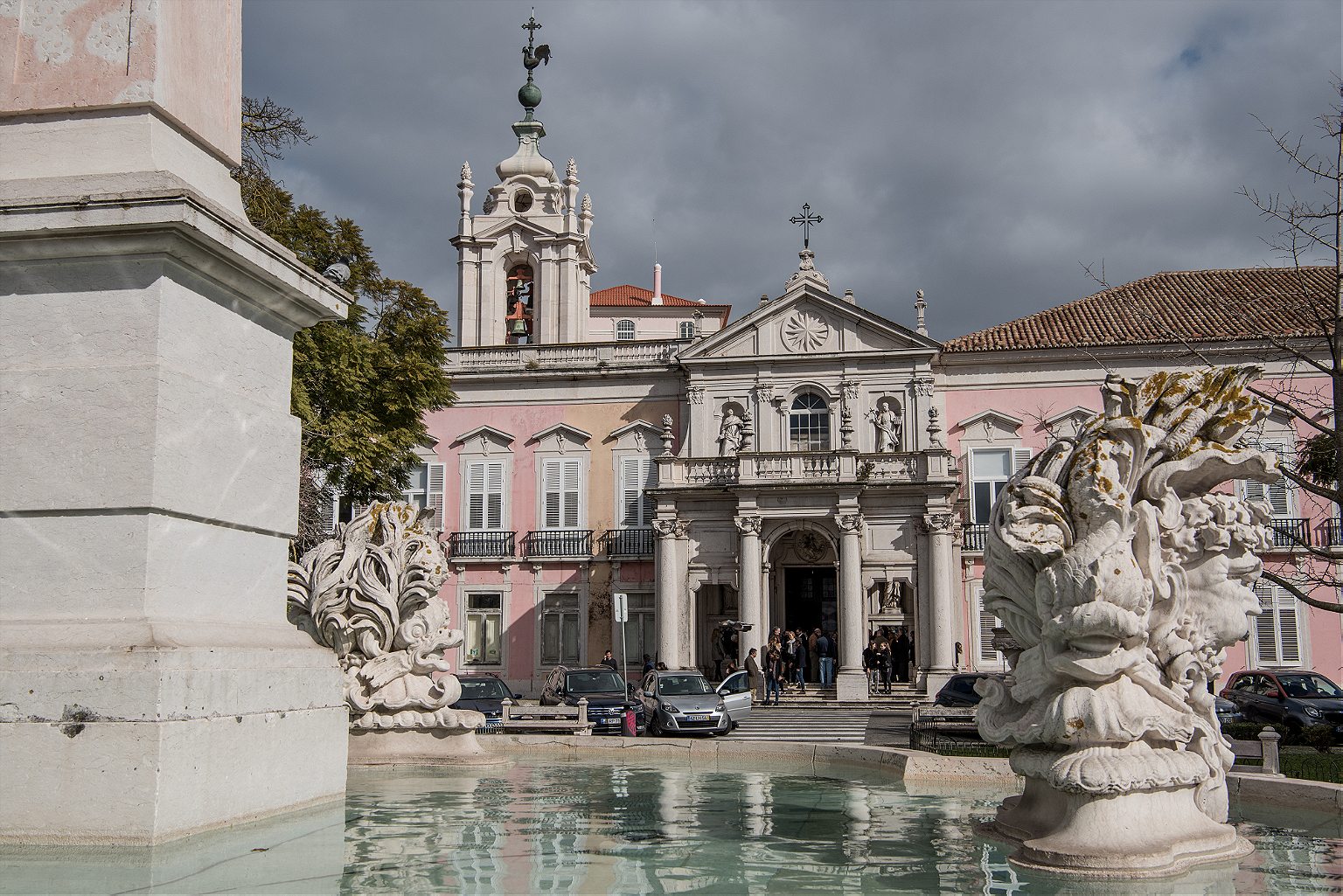
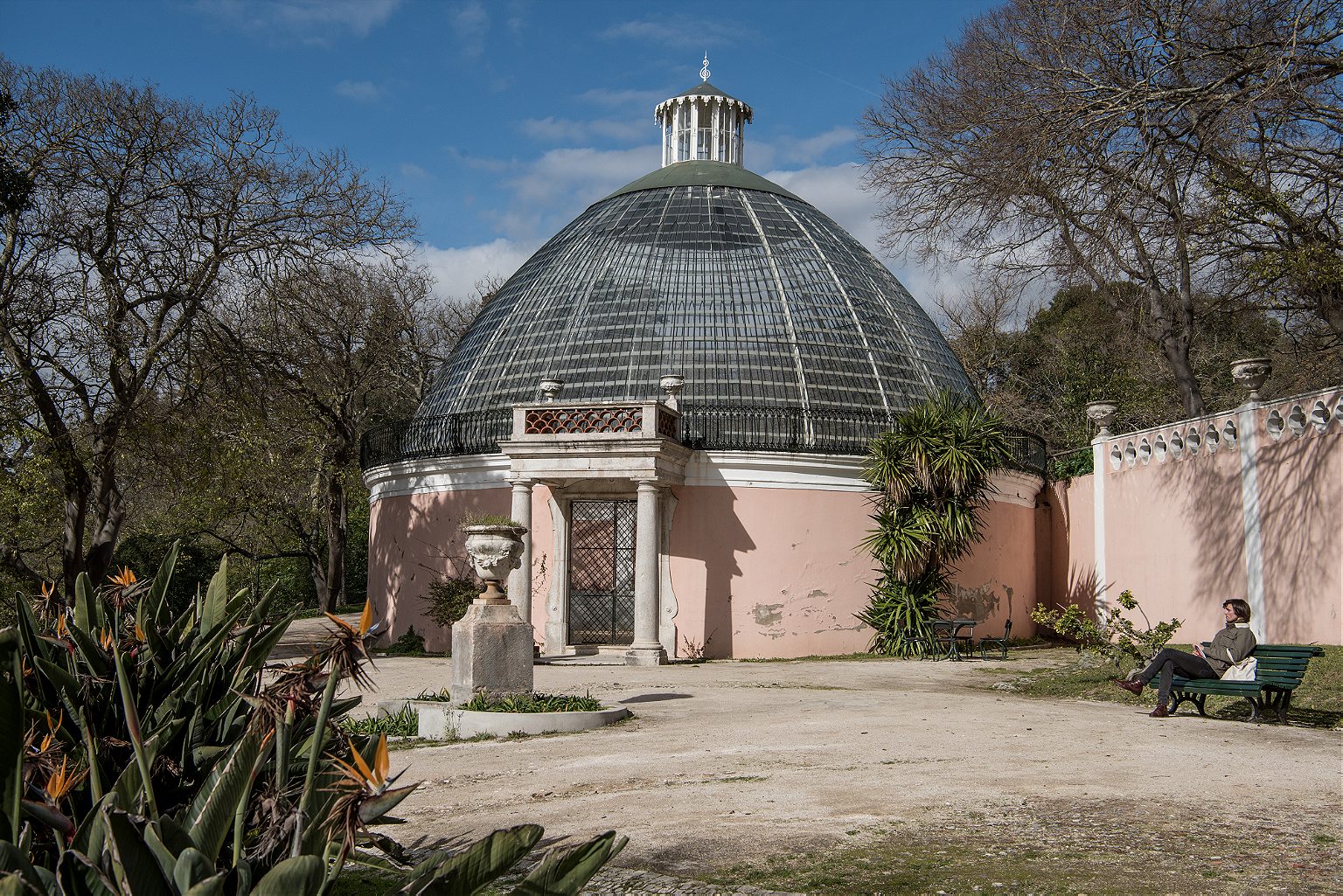
Alcântara, a farming region that was absorbed into the city after the earthquake razed downtown, blossomed in the 19th century as a hub for textile factories and other industries. But it was hit hard in recent decades by successive waves of deindustrialization, and entire swaths of the neighborhood were taken over by the drug trade. The drug problem has since eased, thanks in large part to Portugal decriminalizing consumption in 2001, but Alcântara has struggled to kick its bad reputation.
The LX Factory, a 10-minute walk from the Tapada das Necessidades, has helped change that. Inaugurated in 2008 in an industrial complex that once housed a textile plant and a newspaper printing press, this hub of restaurants and boutiques has helped breathe new life into the neighborhood. From the Tapada das Necessidades, walk south on the Rua da Costa, toward the river, and you’ll hit the complex, which is now home to ethical clothing stores, jewelry designers, toy stores, opticians, vegan shoestores and co-working spaces. There is also some excellent street art, including a giant bee made out of trash by celebrated Portuguese graffiti artist Bordalo II. (There’s another great piece of street art by another famous Portuguese graffiti artist, Vhils, just outside the complex, on the Rua de Cascais.) And don’t miss Ler Devagar, a bookstore/café/art gallery built around the old printing press, where the towering bookshelves climb to perilous heights.
If you’ve worked up an appetite, LX Factory will likely have something that’ll hit the spot, whether you’re in the mood for sushi or artisanal pizza, Mexican food, or traditional Portuguese grilled chicken. Highlights include Landeau, which serves up one of the city’s most celebrated chocolate concoctions—a hyrid of a fondant au chocolat and a dark chocolate mousse; A Praça, a farm-to-table restaurant with offerings drawn from both the Portuguese and Italian traditions; The Therapist, a comfort-food joint that also offers massages and classes on meditation and Ayurveda; and Rio Maravilha, a gastrobar with a terrace and river views.
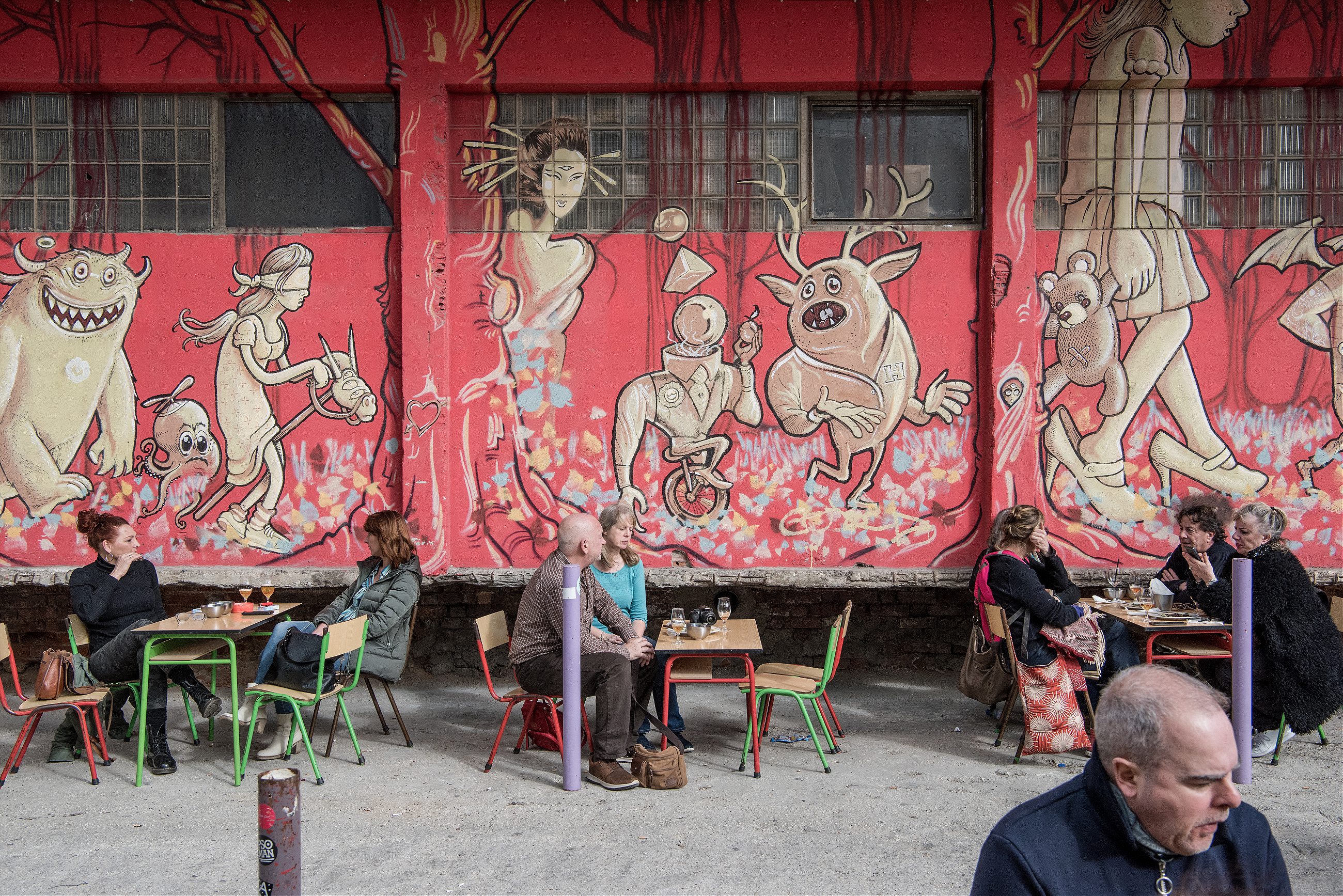
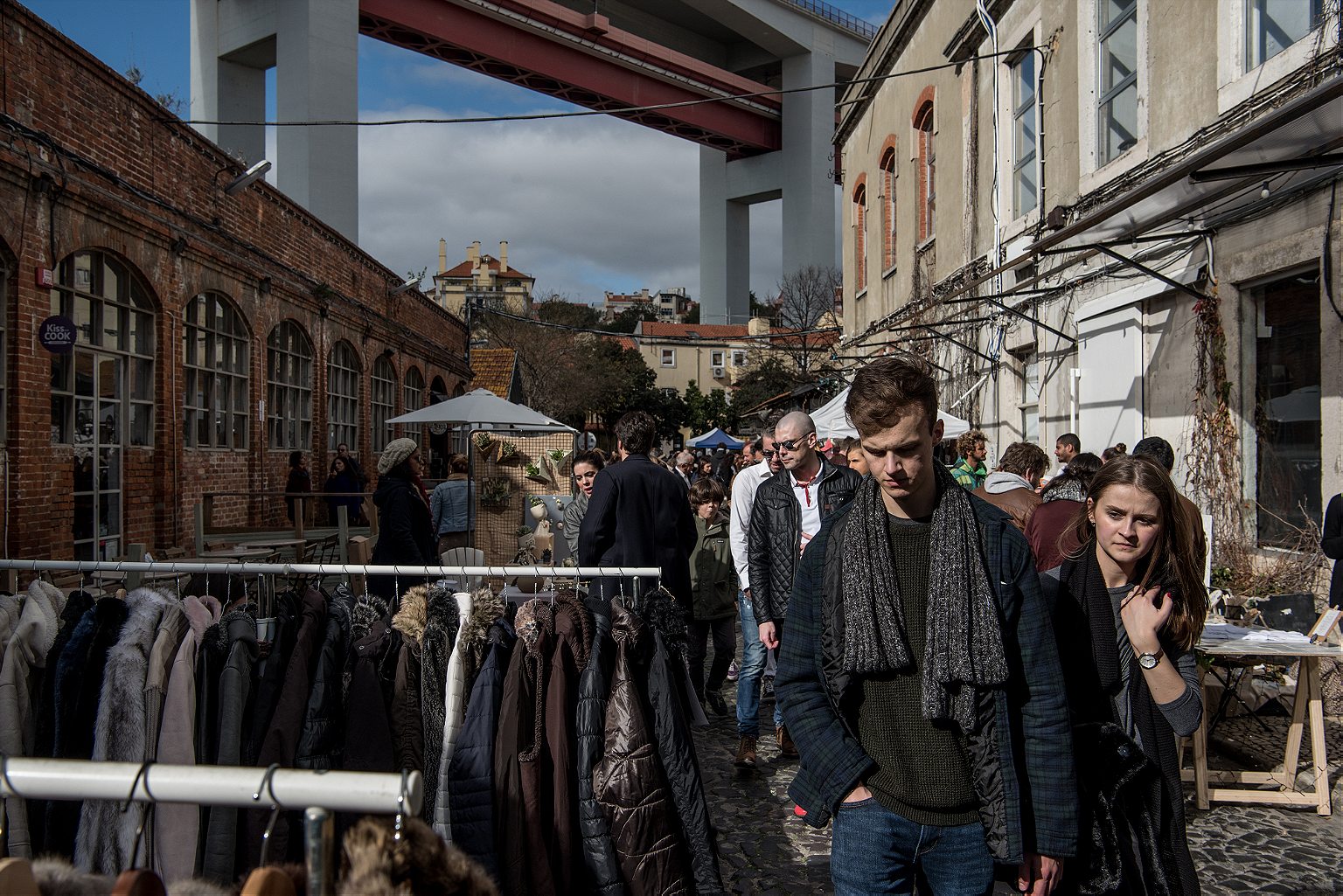
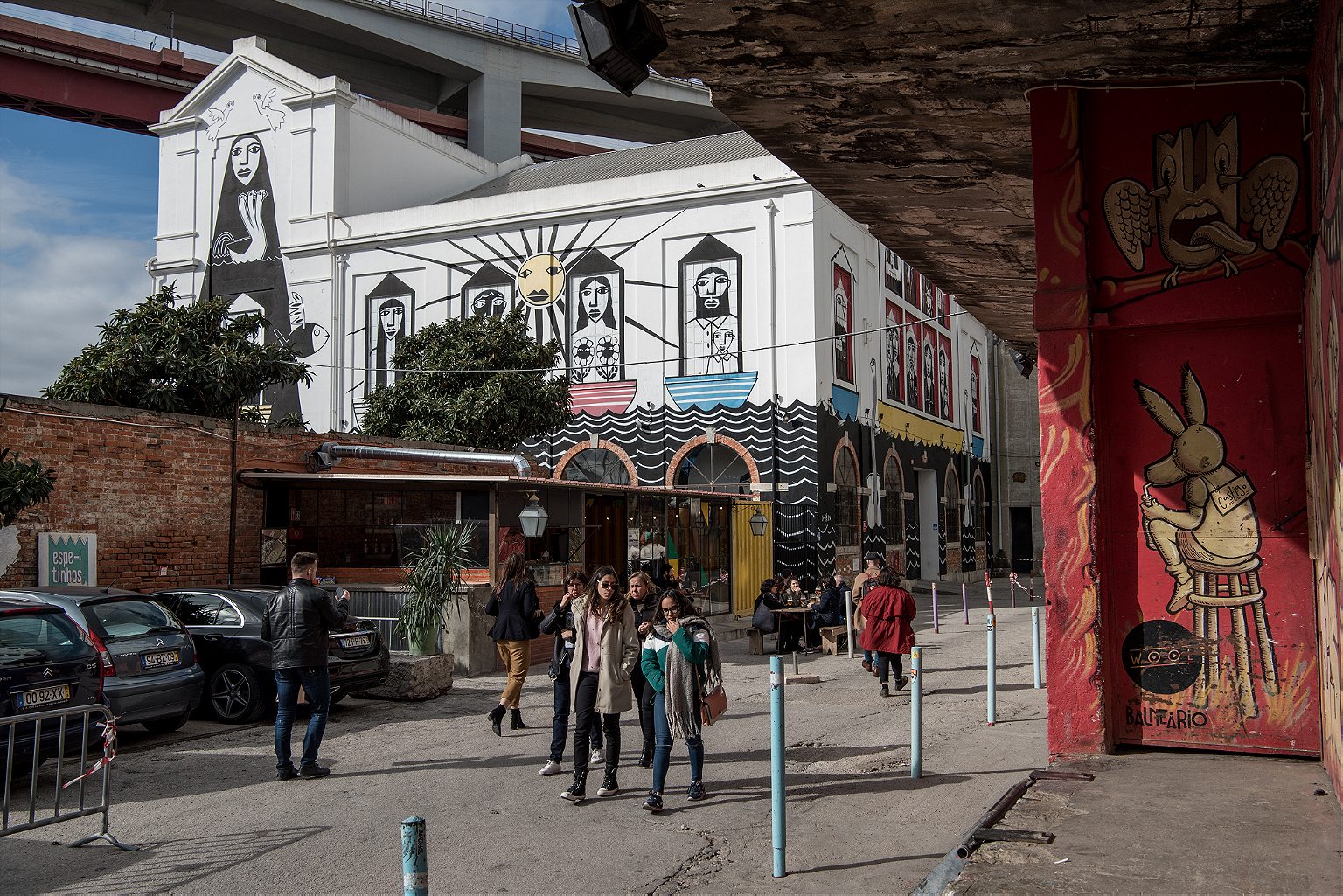
Alternatively, if you’d prefer somewhere less trendy, try the O Palácio-Cervejaria, a typical Portuguese tasca about a 10-minute walk from the LX Factory that specializes in fresh seafood and garlic snails and remains largely unchanged since its founding in 1980.
Next, head west on the Rua 1o de Maio to reach the Capela de Santo Amaro, a little gem of a Renaissance chapel tucked away on a hill. Legend has it the chapel was the work of a group of monks who, while sailing from Rome, hit perilously choppy seas and promised to build a hermitage dedicated to Amarus the Pilgrim if the saint delivered them to safety. Built in 1549, the chapel has fantastic tile work and a stellar view of the April 25 Bridge, a suspension bridge across the Tagus that’s often called Lisbon’s Golden Gate. Built in 1966 during Portuagal’s dictatorship, the bridge was originally named after Salazar, but was re-baptized for April 25, 1974, when nearly bloodless coup by progressive military officers brought the 48-year-long authoritarian regime to an end.
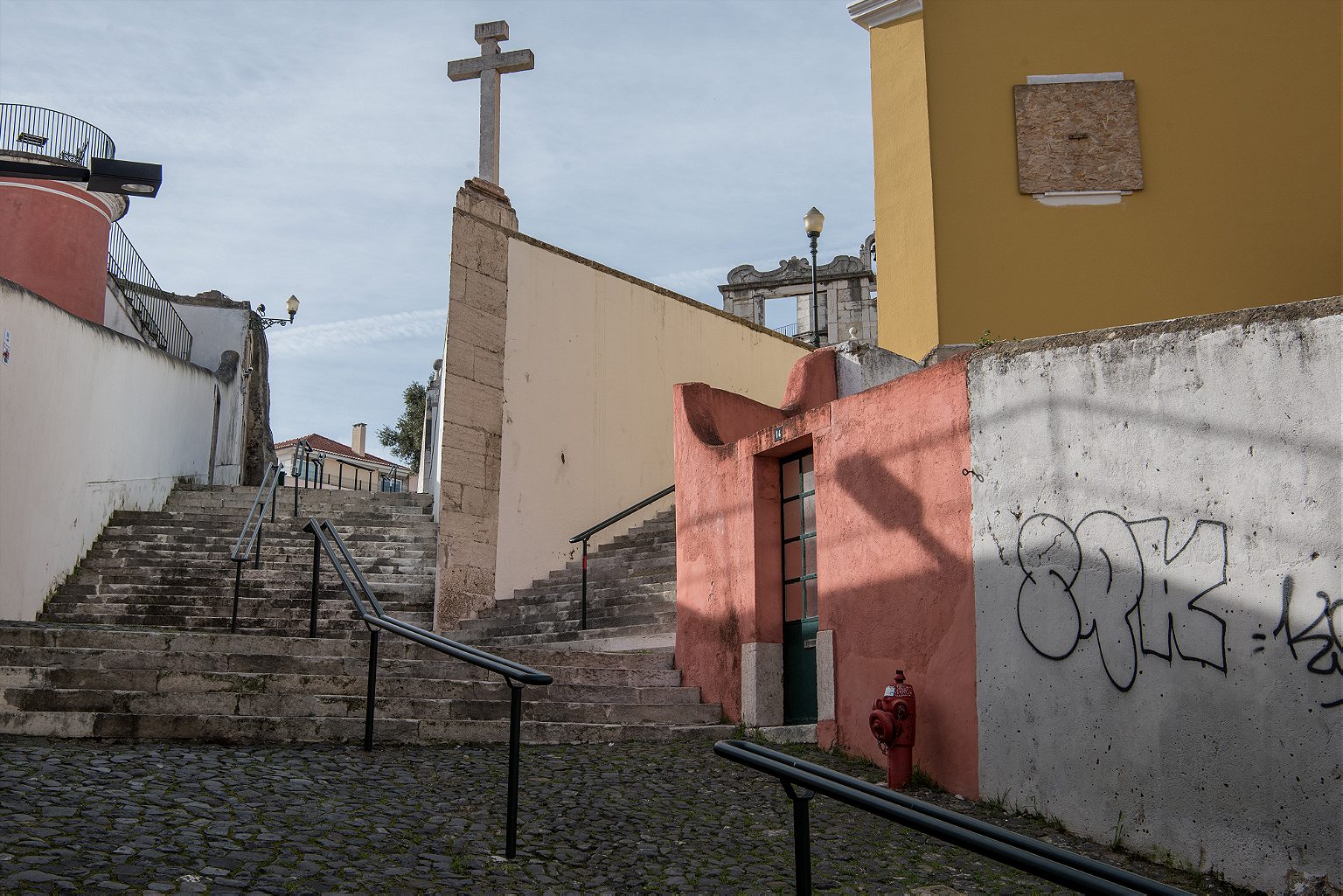

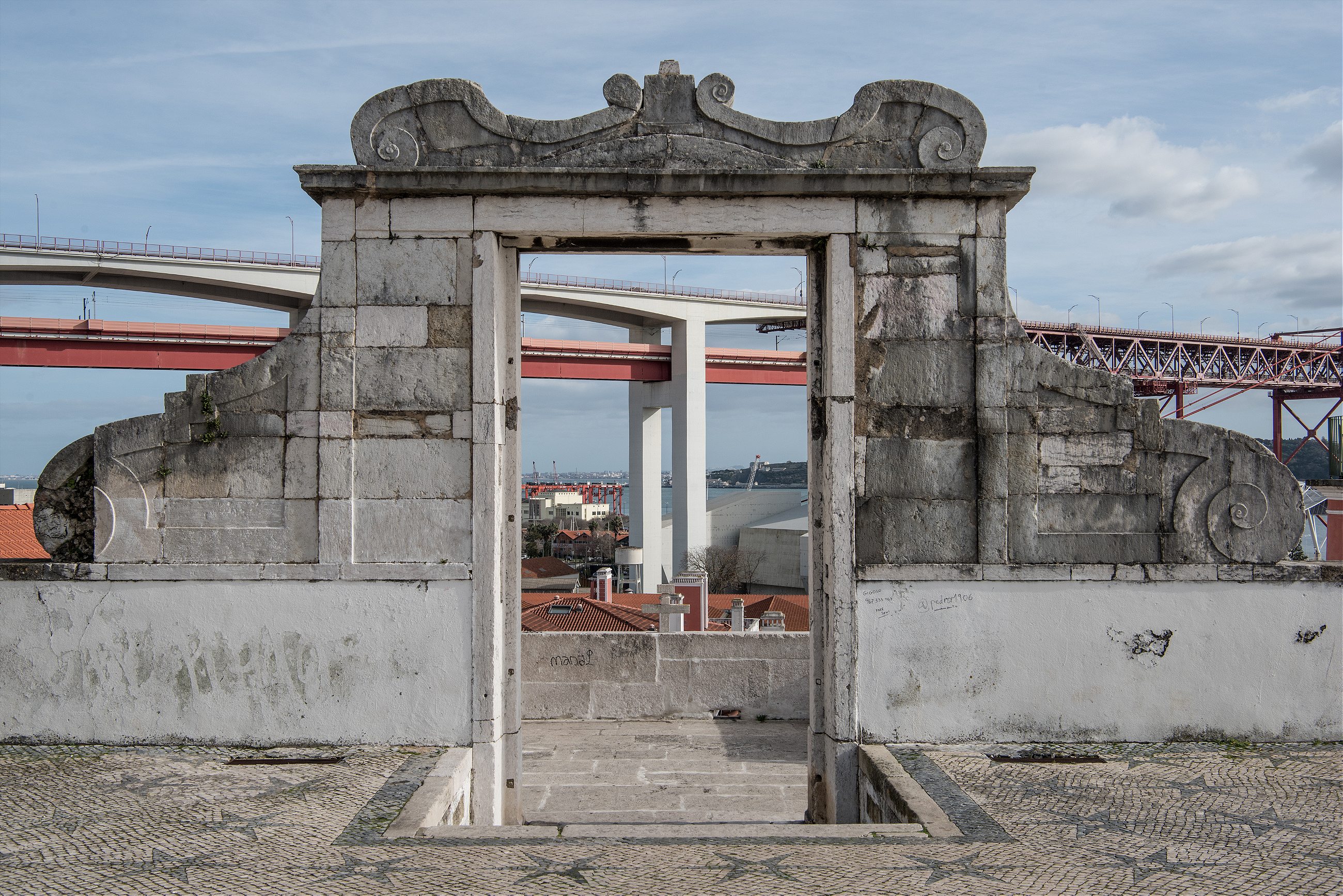
For a post-chapel pick-me-up, head to the Calçada Santo Amaro to Café Dias, a local favorite where nearly all the customers are regulars who greet the affable barista/owner, Pedro, by name. Try the galão, Portugal’s answer to the latte, and a pastel de nata, the custard-filled pastry shell that tourists wait in a blocks-long line for at the Pasteis de Belém bakery in nearby Belém. (Don’t be suckered by the hype: pasteis de nata and pasteis de Belém are the same exact thing.)
Now, you’ll be ready for the 20-minute-long hike up the hill to the Palácio da Ajuda, another palace where the Portuguese royal family lived intermittently following the earthquake. The hilltop location was selected because the region is less prone to seismic activity than much of the rest of Lisbon, but the palace built there in the immediate aftermath of the 1755 quake was destroyed soon after in a fire and its replacement perpetually hampered by political upheaval and financial constraints. Today’s palace is but a fraction of the original project, but it’s still a jaw-dropping labyrinth of opulence and excess. Also, don’t miss the nearby Jardim Botânico da Ajuda, which bills itself as Portugal’s oldest botanical garden – a tiered park with tidy hedgerows on the lower level and a lush collection of plants brought back over the centuries from expeditions to Portuguese colonies in Africa, Asia and the Americas.
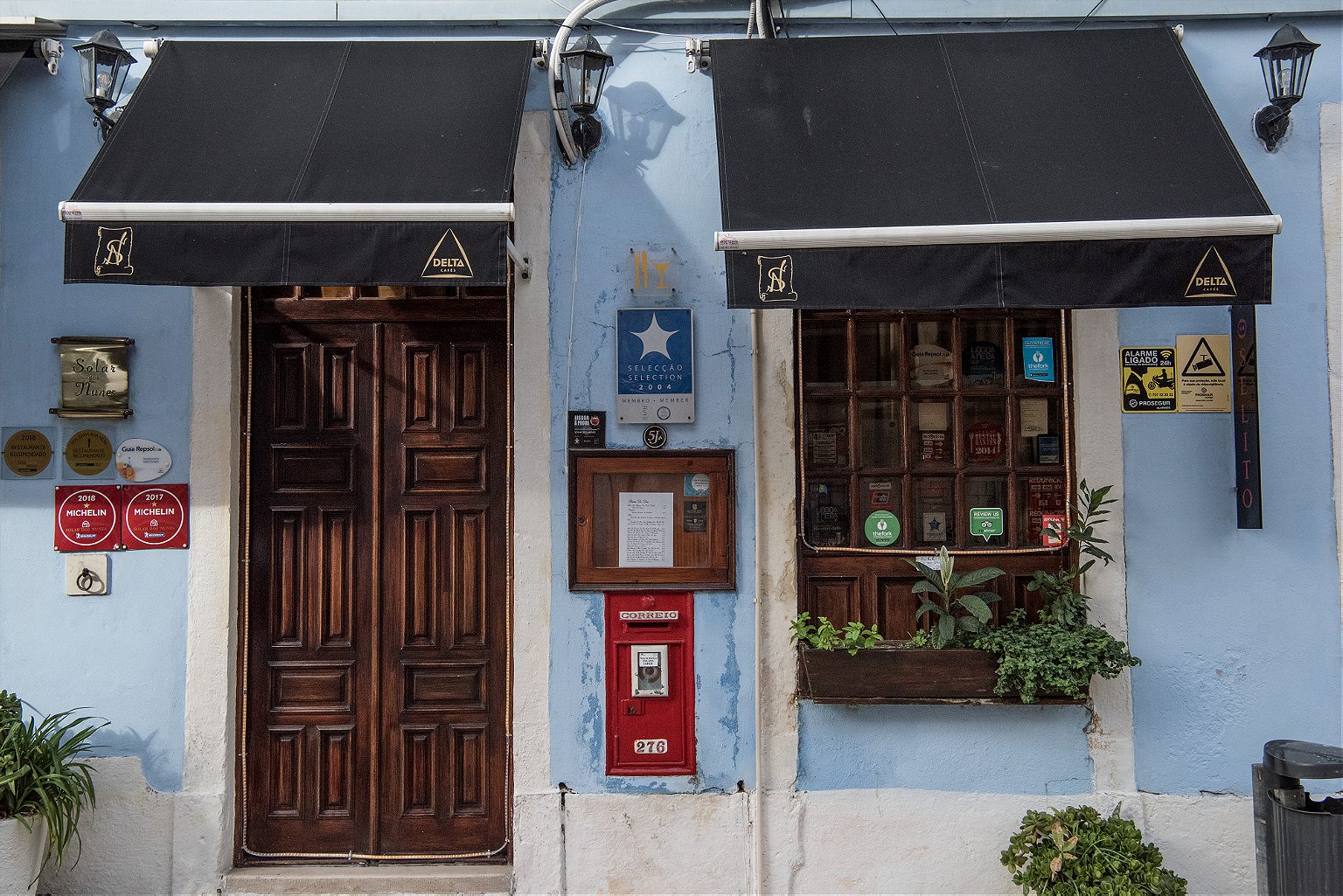
Wrap up your day at the Solar dos Nunes, a family-run restaurant serving up specialties from Portugal’s southern Alentejo region. It’s known for its caldo de cação, a fish soup, and arroz doce, the rice pudding. Beware: The Solar dos Nunes charges a steep 20 euros per person for the couvert, an enticing spread of ham, cheeses, and salads that’s already waiting on the table when you’re seated.
You might have to line up for a table, and if you do, take advantage of the wait to check out the Palacete das Lusíadas, a crumbling 19th-century mansion that’s still stately, despite the tree growing out of the roof and plaster falling off in chunks. It’s across the street and about 30 yards down from the restaurant, but, long abandoned, you can’t go in, and can only appreciate its decadent elegance it from the outside. The building was slated to be razed to make way for a hulking steel and glass hotel, but opposition by a group of neighbors saved this storied Lisboeta structure—at least for the time being.